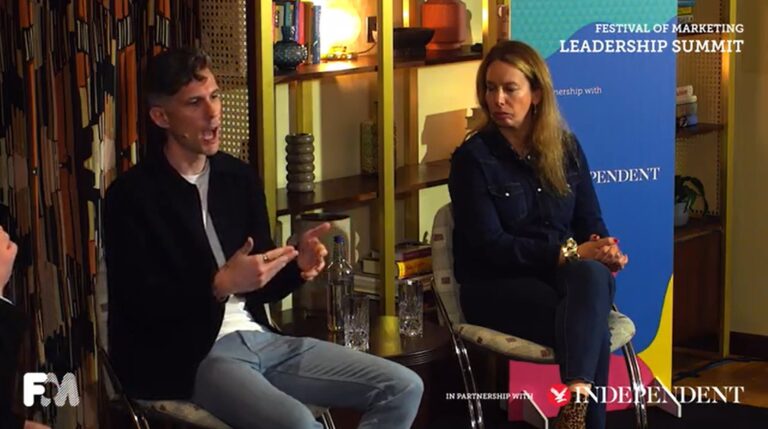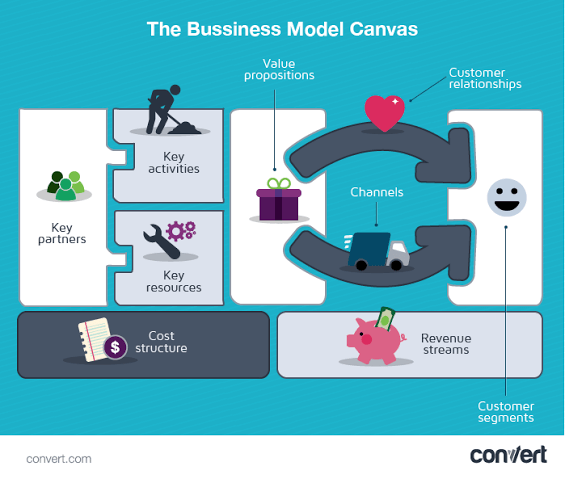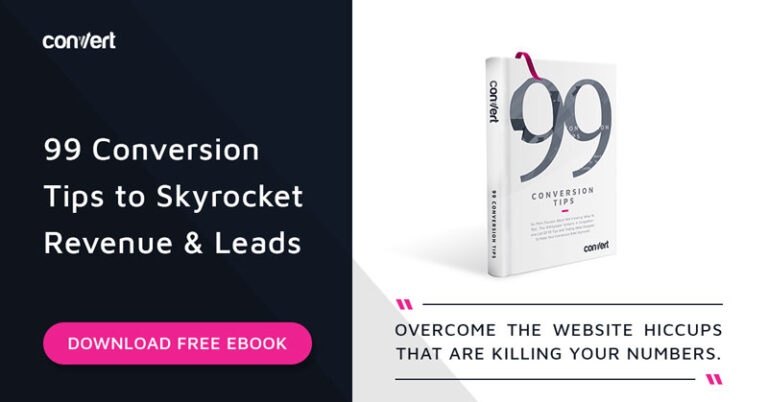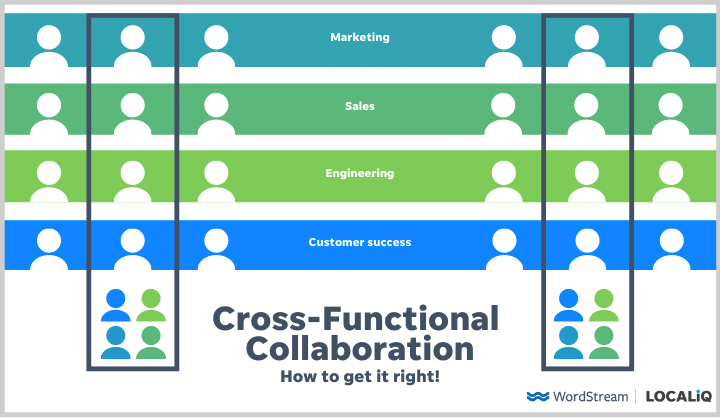“It’s around making sure every pound you spend – whether you spend it on CX or product – every piece of investment in the business adds up to more than the sum of its parts and creates a customer experience which is consistent and whole.”
“90% of success is in the execution and the more you change direction, the harder it is to execute well because you’re executing quickly. So, while big businesses look at little businesses and think ‘they’re so nimble and they change all the time’, little businesses look at big businesses and think ‘my god they nailed the execution – they absolutely milk every penny out of everything they do because they are bloody good at executing.’”
“The guys spending big at the moment are rapid-growth, early-stage businesses. Equally, look at what big businesses are spending. I’d imagine their budget is not what you might think. There’s a significant shift going on in the market, because growth is driven by investment. So, if you’re in a high-growth business, either you’re investing in marketing or you’re investing in product.”
On why she chose to join a DTC company like Eve, after stints at large organisations such as Unilever and the AA, Calverley explained: “I’ve also had a career in picking up historic brands that other people have built over the years, and working with their legacy, often to do brand transformation. I love doing that, but it can feel like a big sense of duty or burden.”
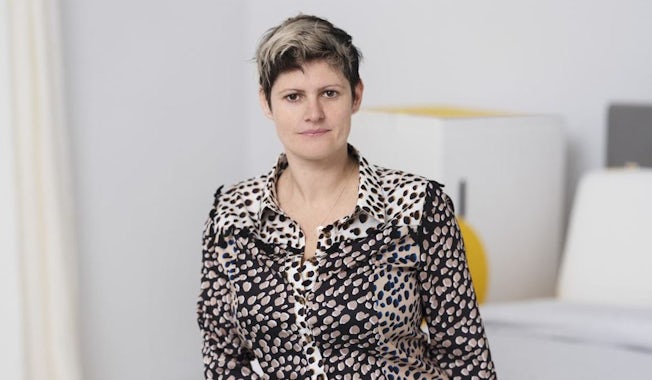
Scale-ups are free from the burden of legacy
“I think the question of whether you’ve got really smart data then is slightly different”, suggests Calverley. “Actually, like all businesses, some stuff is smart, and some stuff is not smart.”
“…Actually stepping back a bit and asking ‘what are we trying to create that is greater than the sum of its parts?’ rather than Frankenstein’s monster. That requires real commitment, dedication, process, structure.”
“I am a very conscious purveyor of the power of creativity,” insists Calverley. “So, you’ll see nothing come out of our brand which could be mistaken for another brand, or that is boring or dull. If you have some creative cut-through, every pound works harder, so we spend the pounds really well and we work them really hard.”
Is all data smart data?
Agility is often cited as another hallmark of DTC brands – but is this always a good thing? Calverley takes issue with the definition of the word.
“I also really wanted to go into ecommerce and really experience the speed and the thrills and spills that comes with a small business [in the industry]. I am a little bit of an adrenaline junkie.”
Calverley broke down the lure of joining a DTC, the challenges of the model, and what DTCs can, in turn, learn from more mature legacy businesses.
While many successful DTC brands appear narrow in their approach (in terms of product or targeting), Calverley suggests that this can be dangerous in the long-term.
Not innovating is worse than innovating badly
“We are 60 people, and I think the official organisational strategy says that in a business of up to 80 people it’s really easy to work that way, because you can naturally form and disform teams around objectives.”
“I really wanted the opportunity to work with a brand in its early days and really form and shape something that someone else will be looking at in 100 years and worrying about. Eve was a great chance to do that.”
For Eve, creativity is key, with the brand continuously looking to cut through the noise with unique and distinct brand campaigns.
“Not innovating is definitely more dangerous than innovating badly,” Calverley adds.
The dangers of continuously changing direction
“Universally, DTC businesses are just able to do more with the customer, and therefore they inherently do smarter things,” says Calverley. “I think when you’ve got high growth businesses that are driven by very rapid test and learn programs, that is absolutely ingrained in the culture.”
On the topic of culture, and the reasons why legacy businesses typically struggle with innovation, Calverley asserts that “…the problem in a more mature business is twofold. One is you have a risk aversion because you’re scared of screwing up what’s gone before (because it’s been really successful). That inherently means that innovation is harder to get to because you’re worried about getting it right.”
“Agile is a funny thing,” she says. “Do we work in multi-functional, cross-functional tight teams, on objectives, on rapid projects – yes absolutely we do. Would we call that agile? Not necessarily.”
“For us, we haven’t got as many customers as the AA, so every customer we talk to is a greater percentage of our customer-base. Every conversation we have is much more important for our overall brand, on a recommendation or on what people think of us, than big businesses.”
“The other thing in a more mature business is that there are more people; there’s just more people to align around a common goal,” she explains. “They’ve also generated, generally, much bigger tech-debt, and data debt. So, in this business we can keep things very simple because we haven’t got a history of platforms on platforms on people on policies.”
Finally, the conversation ended with what, in fact, scale-up and DTC companies can learn from more mature businesses. Calverley suggests that the answer lies in consistency.
Interestingly, Calverley suggests that it might be a case of the grass is always greener, with neither side necessarily winning on all points.
Beware of being too narrow
“If you’re working in a narrow space as a DTC business, you will not be able to be profitable in the long term. It is too small of an opportunity, unless you can rapidly grow and be in 100 countries. So, you’ve either got to be in lots of countries or a broad space to be profitable and to make your ROI payback,” she says.
“At Eve, we’re an immature businesses, so there’s stuff that we do which is the most incredibly clever; I would have bitten your hand off at the AA for the ability to see my sales at a moment’s notice, and to understand how that’s flowing at a dashboard is incredible.”
So, how does Eve Sleep generate brand awareness without huge budget? Calverley suggests that lack of spend is often a misconception about scale-up businesses, with many in fact spending bigger than expected.
For Eve, the focus is on looking slightly further ahead rather than continuously changing direction, so that, as Calverley explains, “we can therefore work more strategically with partners, with brands, and with investments.”
Marketing at DTC brands is typically thought of in terms of smart use of data, personalisation, and clever targeting, but why are these companies able to execute this type of strategy, and at a much faster pace, than legacy brands?
Still, Calverley admits that Eve can rely on simple or manual workflows. “We do a lot of stuff still on Google sheets,” she says. “We’re small enough that if we have a customer problem, we can phone them – and quite often I will phone the customer.”
Consistency in customer experience is key
“The other meaning of agile, as in responsive and changing direction as you need to… I think you need to be careful what you wish for in a big business. There are pros and cons to changing direction, and certainly, having a really clear strategy and executing on it will pay back much more than changing your strategy and changing execution.”
“That, I think, is what scale-up businesses are learning from big businesses – how to be consistent and how to build a brand.”
“Some of the super tech-driven AI personalisation certainly wouldn’t be what you’d see in a smaller young business like mine, because it would be a poor use of our time to invest in that.”
“If you went and spent some time as Gousto, Deliveroo, Uber – there’s not a history of ‘this is how they’ve done things before’. You haven’t got the inertia and the baggage – that burden and duty isn’t there. So, you’re free to make your own mistakes but it also means you’re free to do things that work very quickly, and I think that is a universal trait in young business, and most young businesses nowadays are DTC or ecommerce.”
“We haven’t merged with other businesses, and we haven’t gone through all that complexity. You can look at many businesses and indeed my last business that have to put very big and expensive digital transformation programs in an ambition to get to something as simple as what my business is today. Just to unwind the years and years of legacy and debt.
Eve Sleep’s Cheryl Calverley: the ‘wise consumer’ brings different expectations to ecommerce


